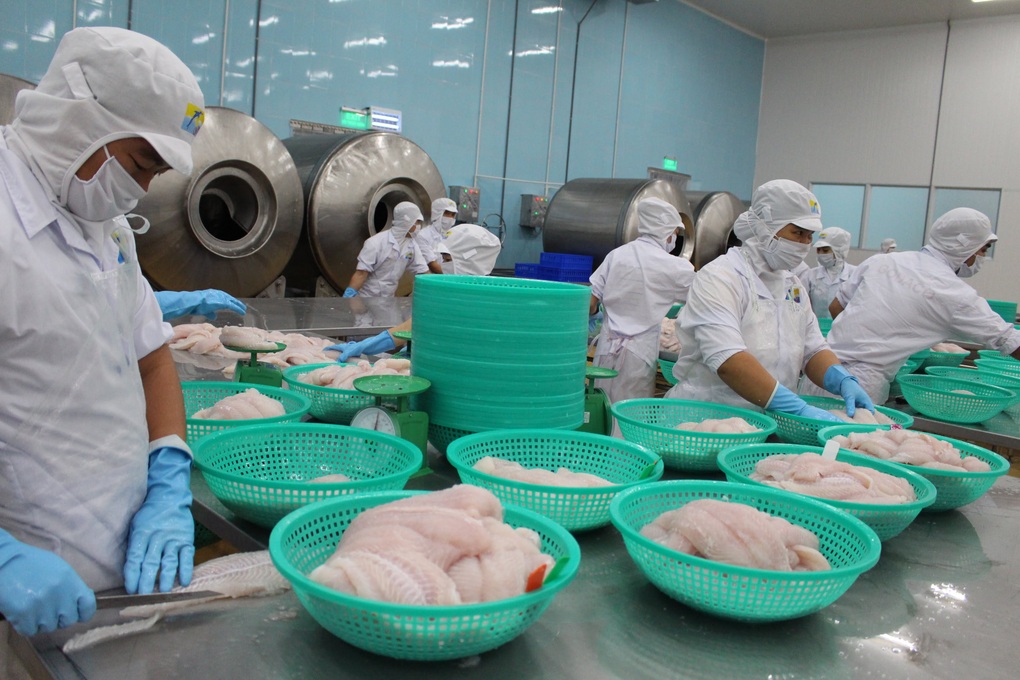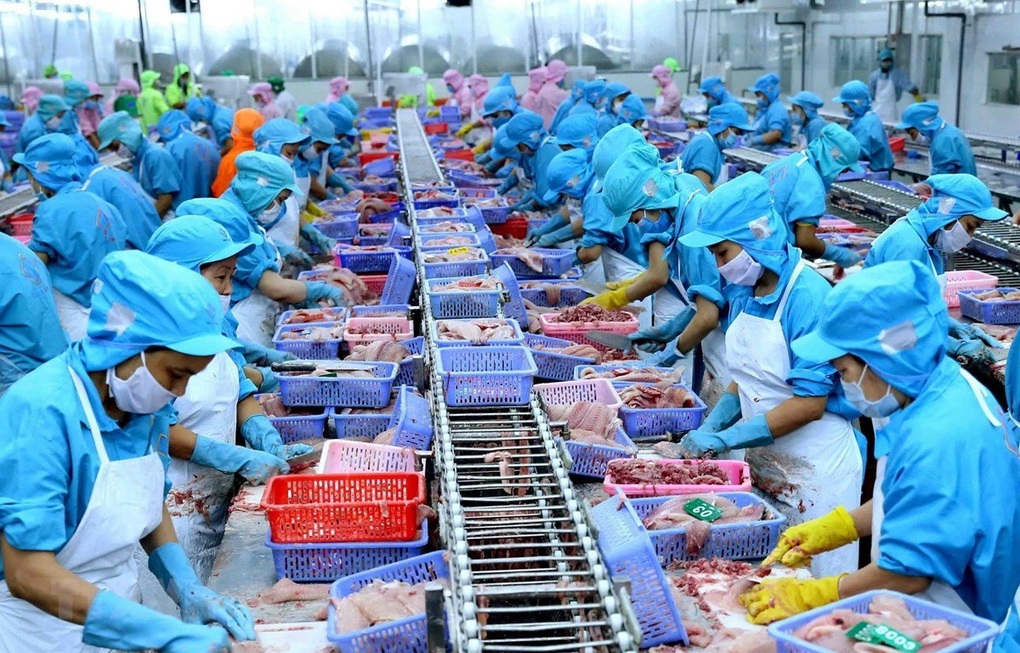Pangasius on Japanese sushi menu for the first time
According to the Vietnam Association of Seafood Exporters and Producers (VASEP), Vietnamese pangasius has just been added to the menu at the Kura Sushi restaurant chain - one of the famous sushi brands in Japan. This is considered an important step in affirming the position of Vietnamese seafood in this demanding market.
Japanese customers appreciate the quality of pangasius: the smooth white meat, mild flavor, harmonious with wasabi and soy sauce, bringing a new experience compared to traditional fish used for sushi.

Processing tra fish at a seafood factory in Tien Giang (Photo: TRAN MANH)
To be able to enter Japan, especially to include Vietnamese catfish in sushi, it must meet strict standards on food safety, farming and processing. Appearing on the Kura Sushi menu opens up opportunities to increase export value and expand markets beyond traditional markets such as Europe and the United States.
Mr. Kazumasa Suzuki, Director of Toyo Reizo Company (Tokyo), said that the demand for tra fish in Japan will continue to increase as consumers tend to look for safe, high-quality seafood sources.
According to VASEP, the history of Vietnamese pangasius in the Japanese market is a story of perseverance and innovation to overcome deep cultural and consumer barriers.
Traditionally, Japanese consumers have a clear preference for marine seafood, especially wild-caught fish. They are often indifferent, even skeptical, towards imported freshwater farmed fish products such as pangasius. This psychological barrier is the biggest challenge that pangasius has faced in the early days of market penetration.
As a result, export turnover in the early stages was extremely modest. In 2011, the total export value of pangasius to Japan reached only 2.56 million USD, accounting for only 0.14% of the total export turnover of pangasius from Vietnam worldwide.
The period from 2011 to 2019 witnessed a dramatic change. Pangasius export turnover to Japan increased 12 times in the period 2011-2018. This explosive growth was not accidental but the result of clearly targeted marketing and product development strategies.
One of the most important milestones was the successful cooperation with AEON, one of the largest retail groups in Japan. The fact that Vietnamese pangasius products meet strict quality standards not only helps the products appear on the shelves of hundreds of supermarkets across Japan but also helps build trust with mass consumers, who are very cautious about imported products.
The recent inclusion of pangasius in the sushi menu of a Japanese restaurant chain has marked a milestone in cultural integration. Initial information suggested that the pangasius products used in sushi in Japan were supplied by Vinh Hoan Joint Stock Company. However, Vinh Hoan's representative denied this information.
According to the director of a seafood company in Can Tho, sushi is not just a dish, it is the quintessence of Japanese culinary culture. The fact that an imported farmed fish like pangasius is accepted in sushi dishes of a large restaurant chain shows that the product has overcome all barriers of prejudice.
"Vietnamese pangasius is no longer seen as a 'cheap alternative' but has been recognized as a legitimate ingredient with enough quality and flavor to stand firm in one of the world's most demanding culinary formats," he said.
Pangasius exports grow well
According to VASEP, Vietnam's pangasius export turnover in August 2025 will continue to grow, reaching 200 million USD, up 5% compared to August 2024. Cumulative pangasius exports in the first 8 months of this year to markets reached more than 1.4 billion USD, up 10% over the same period last year.

Vietnam's pangasius exports are growing well (Photo: VASEP)
Some pangasius import markets have seen a slight decline, especially China (including Hong Kong), down 4%, with a value of 55 million USD, showing that international consumer demand is undergoing subtle, sometimes cautious changes.
In contrast, markets such as CPTPP (an economic area comprising 11 member countries that signed the Comprehensive and Progressive Agreement for Trans-Pacific Partnership), Brazil, and ASEAN continue to maintain high growth momentum.
By the end of August 2025, pangasius exports to the US reached 234 million USD, up 3.7% over the same period and are considered quite stable.
Pangasius exports to countries supported by the CPTPP Agreement reached 242 million USD in the first 8 months of this year, up 36% compared to the same period in 2024. Japan, Canada and Mexico are important markets in the bloc, with diverse needs from frozen fillets to processed products.
Meanwhile, tra fish exports to the EU reached 120 million USD in the first 8 months of this year, up 6% over the same period last year.
Source: https://dantri.com.vn/kinh-doanh/ca-tra-viet-nam-lan-dau-gop-mat-trong-thuc-don-sushi-nhat-ban-20250924091742456.htm





![[Photo] General Secretary To Lam chairs the meeting of the Central Steering Committee on preventing and combating corruption, waste and negativity](https://vphoto.vietnam.vn/thumb/1200x675/vietnam/resource/IMAGE/2025/9/29/fb2a8712315d4213a16322588c57b975)































































































Comment (0)